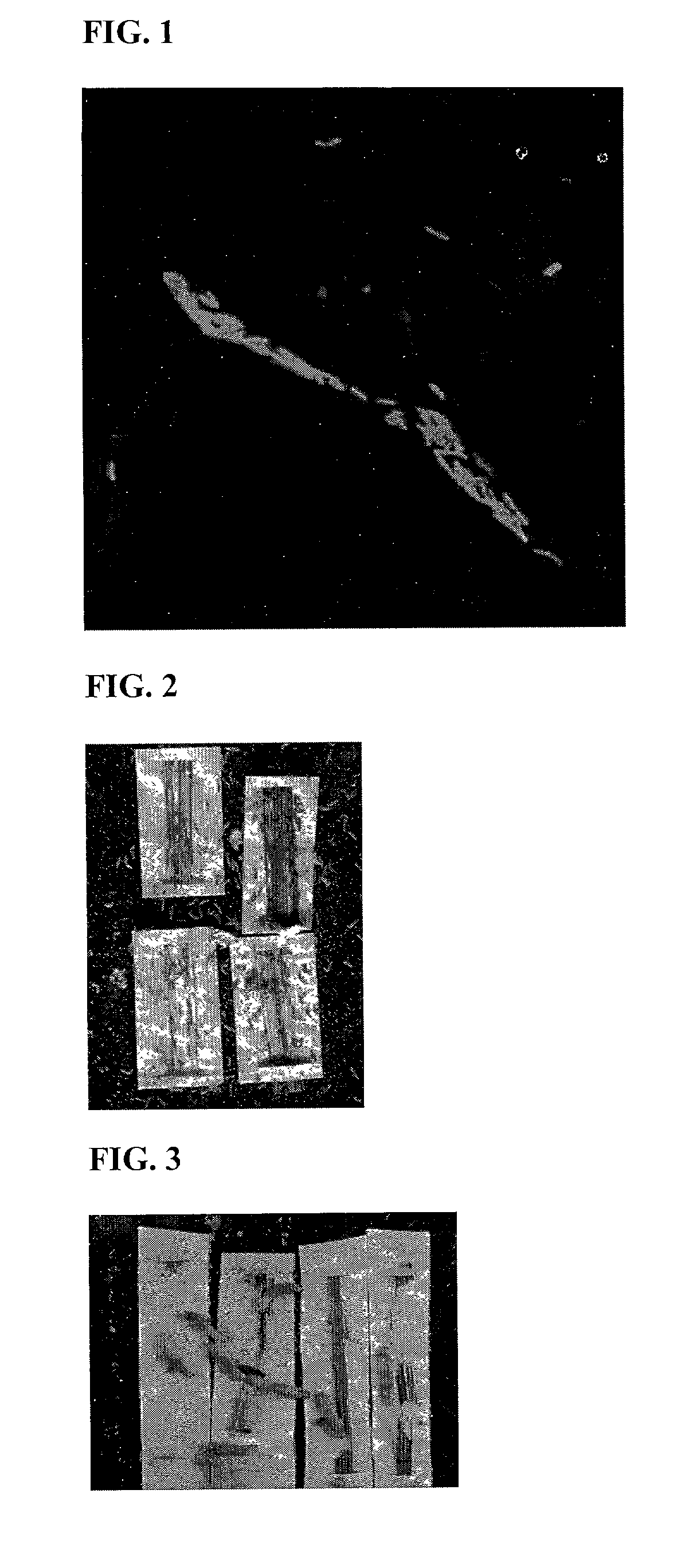Pest control method for grass family plants using endophytic bacteria, pest control material, and seed bound to the pest control material
a technology of endophytic bacteria and pest control material, applied in the field of pest control method for grass family plants, can solve the problems of not being able to apply pathogenic microorganisms competitively, not being able to be used for pests belonging, and carrying the risk of disrupting the natural environment, etc., to reduce the cost of cultivation and reduce the risk of pest occurrence and prediction costs. , the effect of reducing the adverse influence of the environmen
- Summary
- Abstract
- Description
- Claims
- Application Information
AI Technical Summary
Benefits of technology
Problems solved by technology
Method used
Image
Examples
example 1
(1) Isolation of Endophytes
[0052]Plants of Poaceae grown in natural soils were collected at random. The plants were chopped and soaked in 70% ethanol for 30 seconds, and then in 2% sodium hypochlorite for 5 minutes for surface sterilization. Then, the plants were ground in a mortar while adding sterilized physiological saline and sea sand. The products were inoculated to an NB medium, and then cultured at 30° C. for a few days under darkness. Then, single colonies formed on the culture medium were isolated.
(2) Identification of Endophytes
[0053]The nucleotide sequence of the 16s rRNA gene was determined after amplifying by PCR. Several types of forward and reverse internal primers in the 16S rRNA gene were prepared. From them, a pair of primers was selected, and PCR was carried out using, as a template, DNA extracted from the lysed bacterial cells. The amplified DNA fragment was purified by removing salts and primers, and then the nucleotide sequence was determined. The nucleotide se...
example 2
Assessment of Blast-Resistance of Endophyte-Infected Rice Plants
(1) Assessment of Resistance to Leaf-blast Disease
[0067]The usefulness of endophyte-infected rice plants was assessed by testing resistance to blast, which is a major rice plant disease. The endophytes inoculated were: Herbaspirillum sp. strains MYK-B001 and MYK-B002, and Azospirillum sp. MYK-B003 strain. The bacteria were inoculated to the cultivated rice plant Oryza Sativa. The blast fungus (Ptricularia oryza Cavara) used was Kita-1 strain (race 003).
[0068]After the inoculation of endophytes by the above-mentioned methods, individual plants of the cultivated rice plant Oryza Sativa were cultivated to the 4 to 5th leaf stages.
[0069]A suspension of spores of the rice blast fungus was prepared by washing the surface of dry spore-forming medium with Tween 20 diluted 5000 to 10000 times with distilled water; the suspension was diluted to adjust the spore density so that 20 to 100 spores were visible when viewed under the h...
example 3
Assessment of Pest Resistance of Endophyte-infected Plants of Poaceae
[0079]Major pests for Poaceae plants are insects belonging to Orthoptera, Thysanoptera, Hemiptera, Lepidoptera, and Coleoptera, and these insects damage the plants by eating and sucking on the plants. It was assessed whether the resistance to such pests was conferred to the plants through the infection with endophytes.
[0080]First, the endophytes were assessed for the effect towards the lawn grass cutworm Spodoptera depravata (Butler), which is a major pest insect of the family of cutworms that causes insect damage to every plant of Poaceae.
[0081]The endophytes used were Herbaspirillum sp. strains MYK-B001 and MYK-B002, and Azospirillum sp. MYK-B003 strain. Inoculated plants were prepared and grown by the same method as described above.
[0082]The feeding test was carried out as follows: leaf blades of endophyte-inoculated and non-inoculated plants were cut into 20-mm square pieces and then placed in 90-mm dishes; app...
PUM
 Login to View More
Login to View More Abstract
Description
Claims
Application Information
 Login to View More
Login to View More - R&D
- Intellectual Property
- Life Sciences
- Materials
- Tech Scout
- Unparalleled Data Quality
- Higher Quality Content
- 60% Fewer Hallucinations
Browse by: Latest US Patents, China's latest patents, Technical Efficacy Thesaurus, Application Domain, Technology Topic, Popular Technical Reports.
© 2025 PatSnap. All rights reserved.Legal|Privacy policy|Modern Slavery Act Transparency Statement|Sitemap|About US| Contact US: help@patsnap.com

